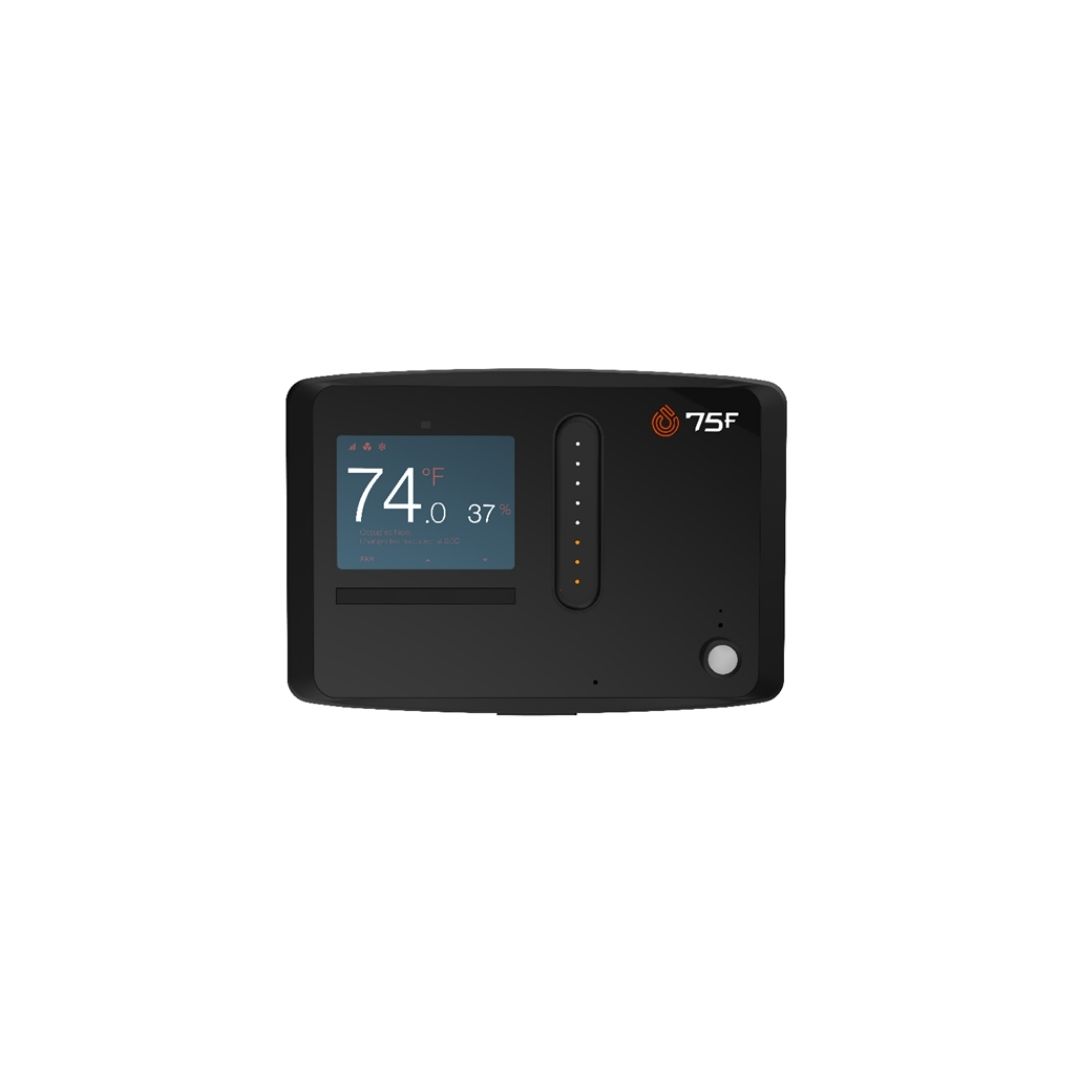Building automation leader, 75F announced the newest addition to its suite of software-defined hardware, the 75F® HyperStat™. Its eight onboard sensors and industry-leading connectivity make the device the most advanced thermostat and humidistat on the market today.
The HyperStat senses temperature, humidity, CO₂, occupancy, light, sound, volatile organic compounds (VOCs), and optional particulate matter, making it an affordable one-stop device for WELL Building Standard support. Data from these sensors feed wirelessly into a real-time analytics package and inform 75F’s built-in, Guideline 36-compliant control algorithms.
Additionally, the HyperStat comes packed with four analog inputs, three analog outputs, and six relays that leverage software-defined control capabilities for all types of standalone multi-stage and modulating packaged HVAC equipment, from PTAC units to heat pumps and fan coils found in commercial buildings. It can also act as the local interface and sensing for VAV controllers.
Combined, these features mold the HyperStat into an energy and indoor air quality management powerhouse capable of servicing more people and buildings than ever before.
Commenting on the launch, Mr. Deepinder Singh, Founder & CEO, 75F, said, “The HyperStat brings IAQ data forward by bundling eight digital sensors into a single affordable, connected device. This coupled with software-defined control sequences opens vast possibilities for better building operation. Our customers can breathe easy — we’ll do the rest.”
Built-in sequences for occupancy detection include auto-away and force-occupy settings that, along with a door and window opening sensor, give the HyperStat flexibility to optimize indoor environments — no matter the current building schedule. Key card integration for large hospitality customers and a more user-friendly interface allows fine-grained individual zone control.
HyperStat works out of the box with 75F’s IoT-based Building Management System or can be integrated into other BMS solutions via Modbus/BACnet. The device allows constant recommissioning and creates its own network, reducing cost barriers and bringing far more points to HVAC sequences of operation to reduce energy consumption and improve occupant comfort, health, and productivity.



